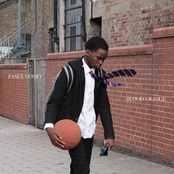 As it’s International Women’s Day, I wondered how well that most reactionary of musical beasts, the orchestra, would stand up to tests of gender equality. I wondered how many female composers were being performed by Manchester’s three orchestras this season, and then expanded my research into conductors, soloists and rank and file player numbers. Perhaps unsurprisingly, the numbers don’t look great.
As it’s International Women’s Day, I wondered how well that most reactionary of musical beasts, the orchestra, would stand up to tests of gender equality. I wondered how many female composers were being performed by Manchester’s three orchestras this season, and then expanded my research into conductors, soloists and rank and file player numbers. Perhaps unsurprisingly, the numbers don’t look great.
Let’s start with the good news. Between them, Manchester Camerata, The Hallé and the BBC Philharmonic list 193 musicians as players on their websites. Of these, 93 are women, or 48.2%. According to a 2009 Mid-Year Population Estimate available from Manchester City Council women make up 48.8% of the population in Greater Manchester, so that proportion looks spot on. It is worth noting however that gender balance within sections of the orchestra seems to vary: the strings containing more women while brass sections tend to contain more men. The proportion of women to men across orchestras is brought down by the BBC Philharmonic, whose ratio is closer to 3 women to 4 men.
That’s about where the good news ends. Of 77 soloists this season, just 27 are women, a lousy 35%. That looks even worse if you take singers out of the equation, dropping to 31.8%. That means less than a third of the musicians performing concerti in Manchester are women.
The landscape for female soloists looks a lot better than that for conductors though. That’s because if you were to take Manchester orchestras as your guide there aren’t any. Not a single woman is being employed as a conductor by any of the Manchester orchestras this year. Not one. But 34 men are.
Coming back to my initial curiosity. How many female composers are being performed by these institutions? The answer is: two. 99 names appear on programmes, some multiple times, but the other 97 are all male. The names of this apparently lucky couple are Nina Whiteman and Sally Beamish. Nina’s Windows on the Neva was premiered by Manchester Camerata in October, while Sally Beamish’s The Song Gatherer (Cello Concerto No. 2) was performed by Robert Cohen with the Hallé in December. Of course, the historical nature of orchestral programming means that orchestras will have a quick defence: ‘the absence of female voices is an unavoidable reflection of historical society.’ Hence the fact the only music by women composers played this season is by living composers. Fair enough, but 13 different works by living composers were performed by these orchestras. 2 composers out of 13 still leaves us with just 15.4% women.
So, where are the women in your local music scene? It’s not that they don’t exist, but they are being neglected by some of the most highly funded and prestigious musical institutions. In a recent article for the San Francisco Chronicle, Joshua Kosman wrote, ‘music lovers ought to be having a real debate about just what it means for an artistic edifice so grand and arresting [as the Vienna Philharmonic] to be built on a foundation of more-or-less explicit sexual and racial discrimination.’ His criticism holds true to greater and lesser extents for orchestras around the word. I would urge you to do the maths, work out what your local orchestra — or whatever cultural institution you value — looks like demographically and ask the difficult questions.
Sources: Manchester Camerata season brochure; printed BBC Philharmonic season brochure; downloadable calendar from The Hallé; player lists on the websites of all three orchestras.





